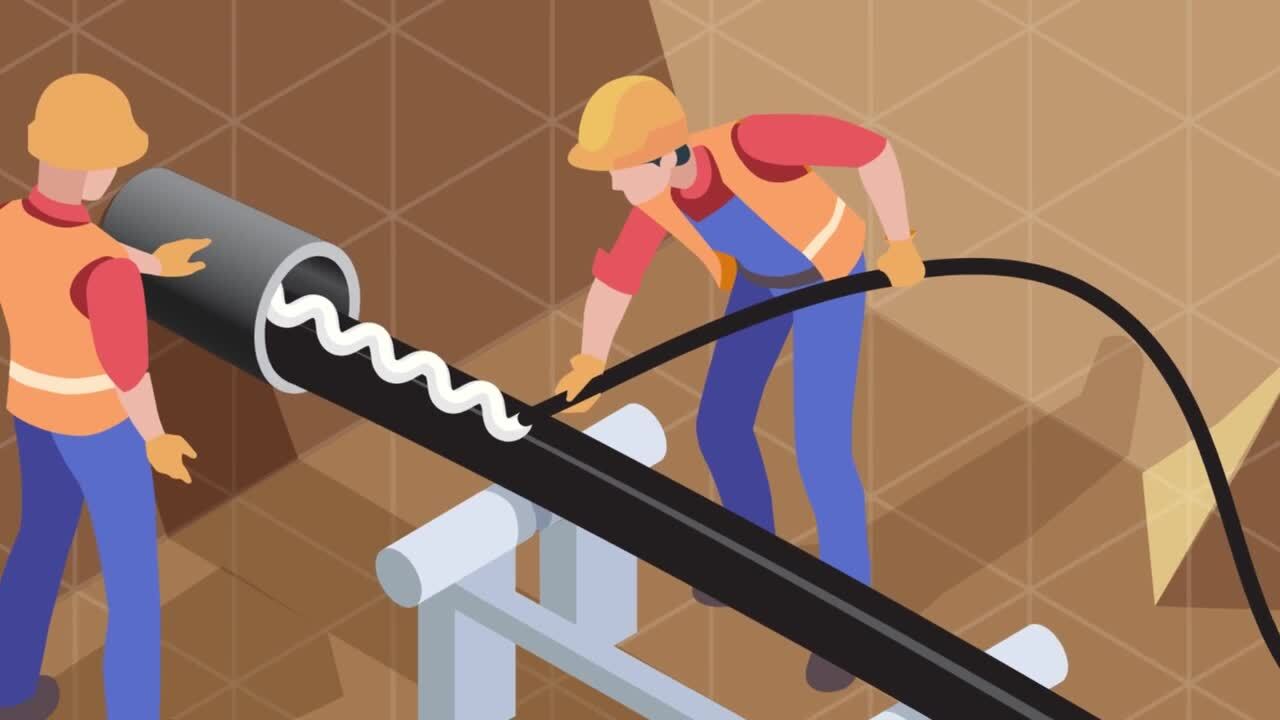Simple Ways to Help Sustainability Efforts for Underground Cable-in-Duct Installations
Reducing the impact on the environment is no longer a trend but a smart way of doing business. As environmentally conscious technologies and tools have become more cost-effective and accessible, companies have incorporated them into their design and construction practices to realize sustainability goals. Yet, practicing sustainability is a process of continuous improvement. There are always opportunities to make incremental revisions, especially when it comes down to the details of a project.

Large infrastructure projects, like the installation of underground cables, can have a significant impact on the environment. There are different methods for installing cable underground, such as trenching or direct burying, directional boring or Horizontal Directional Drilling (HDD), and others. Each of them brings unique advantages and drawbacks, especially from an environmental standpoint. Several areas of concern are the use of chemicals as part of installation, potential groundwater pollution, and waste generation.
Installing underground cable in duct or conduit provides the most secure, reliable, and resilient system or network. However, there are opportunities to improve sustainability efforts within installation practices. These projects typically generate significant amounts of waste from construction packaging materials. Disposal is often difficult and can lead to landfill pollution. To minimize the impact of this waste, companies can prioritize waste reduction and recycling efforts. Additionally, companies can work to minimize the amount of waste generated during the cable installation process. In this brief article, we present a straightforward way to implement a solution that may sound obvious but needs senior management specification effort.
Prevent Ground and Surface Water Pollution.
A tool commonly used to aid underground cable installation is cable pulling lubricant. Some generic industrial lubricants contain petroleum-based ingredients such as white mineral oil or paraffin and hydrocarbon waxes and may not be compatible with cable jacket materials.
| Related Content: Cable Compatibility in Undergrounding |
The Safety Data Sheets (SDS) for such products clearly state that these chemicals should be prevented from reaching surface water bodies, groundwater reservoirs, and sewer systems. These petroleum-based products are insoluble in water. They are often thick pastes with low density so that they clump together and float on the top of water and saturated soil. Grease can clog pipes and pumps, is difficult to remove, and may collect sand and other grimes to become abrasive to the cabling system. Considering the high volume of lubricant needed in an average underground cable installation, it is unrealistic to assume that spills will not occur. That is a problem.
Additionally, petroleum and wax-based products do not evaporate over time. These products (thick pastes) remain in contact with the cable jacket long-term—potentially shortening the cable’s life expectancy because of chemical incompatibility. Moreover, what happens when the cable is energized, and the temperature rises? It is common for petroleum and wax-based lubricant to liquify and flow to the lowest point in the duct. If the duct is not properly and completely sealed, the lubricant will find its way to the groundwater and cause contamination over time.
Water-based, specification-grade pulling lubricants are designed specifically for underground cable-in-duct installations. This type of specialty lubricant is effective, safe to use, and reduces environmental concerns. After application and cable installation, only a thin, environmentally friendly coating remains. Its water content evaporates over time.
| Related Content: The Science of Cable Lubrication: Film Thickness and Quantity Recommendations |
Reduce Waste and Packaging.
Plastic buckets are used for packaging petroleum and wax-based lubricants, as well as water-based cable pulling lubricants. For large cable installations, this creates a plastic waste stream. While every effort can be made to properly dispose of empty plastic buckets, there is a more sustainable packaging option available with water-based, specification-grade cable pulling lubricants, such as Polywater® J. These types of lubricants can be packaged in 275-gallon (1,040-liter) containers, which can replace the use of fifty-five (55) 5-gallon (19-liter) plastic buckets. An added benefit to this packaging option is that the lubricant is pumped directly onto the cable as it enters the conduit, providing an efficient application method while reducing waste. In contrast, thick petroleum-based and wax-based lubricants have a higher viscosity. As a result, these types of grease lubricants are commonly hand applied to evenly coat the cable surface. Pumping specification-grade cable pulling lubricant from a 275-gallon (1,000-liter) container is not only more efficient than hand application, but it provides a positive impact on sustainability efforts.

Conclusion
Underground cable-in-duct installation projects often have a significant impact on the environment. However, with careful planning and the implementation of sustainability measures, the impact of these projects can be minimized. Specifying quality cable pulling lubricants and managing waste are crucial factors to consider when undertaking an underground cable installation project. By prioritizing sustainability goals, companies can ensure that their projects have a minimal impact on the environment and meet the needs of the communities they serve.
